“My favorite gun is always the next one.” – Yankee Marshall

CZ 75 Compact
“At 5 inches tall with a barrel length of just under 4 inches, the Compact model shaves a little more than ¾ of an inch″ off the length and about ½ inch off the height of the full-size CZ 75. Its reduced size allows it to readily disappear under regular clothing. The CZ 75 Double-Action/Single-Action with a manual safety lever provides the user with two options for carry: hammer-back with the safety on for single action operation, or manually de-cocked for a double action first shot with no need to remember to take off the safety before firing. Because the 75 Compact retains the steel frame of the original 75, only 2.4 oz of weight is lost, making it the softest-shooting compact in the CZ 75 line.” – Source: CZ USA.
The CZ 75 Compact is just one pistol in an extensive line of CZ pistols. The CZ 75 Compact is, of course, a standard CZ 75 with a slightly shortened grip and 3.9-inch barrel in lieu of a 4.6-inch barrel. As with the CZ 75B and CZ 75 BD, the CZ 75 Compact has things going for it and going against it as a concealed carry pistol as compared to more modern firearms. But first, look at the specifications for the CZ 75 Compact and we will go from there.
Specifications (Source – CZ USA)
| Product Name | CZ 75 Compact – 9mm |
| SKU | 91190 |
| Firearm Type | Handgun |
| Purpose | Concealed Carry |
| MSRP | $646.00 |
| Chambering | 9mm Luger |
| Magazine Capacity | 14, bumper pads |
| Magazine Type | Double Stack |
| Frame | Steel |
| Grips | Plastic |
| Trigger | Mech DA/SA |
| Trigger Pull (measured) | |
| Single Action | 5 lbs. 4.3 oz. |
| Double Action | 11 lbs. 0.7 oz. |
| Sights | Fixed, three-dot, luminescent |
| Barrel | Cold Hammer Forged |
| Barrel Length | 3.75 in |
| Actual Weight | |
| Unloaded w/magazine | 2 lbs. 0.8 oz./33.28 oz. |
| Loaded | 2 lbs. 7.9 oz./44.8 oz. (loaded 14+1, 147-grain JHP) |
| Overall Length | 7.24 in |
| Height | 5.03 in |
| Width | 1.38 in |
| Safety | Manual Safety, Safety Stop on Hammer, Firing Pin Block Safety |
Of course, the basic specifications do not tell the whole story and, hopefully, I can provide you with that.
Why? Just, why?
After I had purchased my first CZ 75 pistol, the CZ 75B Omega, I was hooked on the CZ line and desired a few more to have and to hold – and to carry whenever I felt the need.
A CZ 75 BD, a version with a de-cocker, was the next in line, which led to the CZ 75 Compact for a more concealed carry than is possible with the full-size CZ 75. A CZ 75D PCR compact, a light-weight version of the CZ 75 Compact, was purchased after the CZ 75 Compact, but I decided to review it before I reviewed the CZ 75 Compact, and you can read the review of the CZ 75D PCR compact at https://guntoters.com/blog/2020/02/16/cz-75d-pcr-compact-product-review/
If you have followed my rambling gun reviews, you know that I prefer wood and steel over polymer pistols. Of course, the CZ 75 falls into that preference; albeit, they may be heavier and bulkier than their polymer counterparts. And even though I am of the single-action pistol fondness, I have no qualms with double-action/single-action pistols having owned, and still own, a few of these pistols. The Beretta M9 has been my latest carry and it is an excellent example of a double-action/single-action pistol. The Sig Sauer P220 and P226 have been carried in the past, and a Sig Sauer P239 still is available to me, although due to it being no longer manufactured it now resides in the safe. I was impressed enough by the Springfield Armory to purchase the XDM E-series 4.5 pistol in 9mm, a hammer-fired steel and polymer pistol, as it reminds me a lot of two Sig Sauer pistols. Fortunately, and for the time being, I can involve myself with a variety of pistols to write about and enjoy.
I just could not find a reason for me not to select the CZ 75 Compact as a summer carry, or as even a year-round carry according to my whim and whimsy, as part of a rotation. The CZ 75 B Omega has been a fine pistol and I do have to say that it is one of my favorites to have, to hold, and to shoot. Having a smaller version of it just seemed like the right thing to do.
Styling
Like the full-size CZ 75, the styling of the CZ 75 Compact is timeless, at least since 1975, anyway. The slide is embedded into full-length rails (a takeoff of the Sig Sauer P210) within the slide, which gives the pistol its low profile and adds to the accuracy of the pistol. Features of other pistols are also incorporated into the final design of the CZ 75 pistols; such as, the cam locking system like that used in the Browning Hi-Power pistol, and a manual safety, also like that of the Browning Hi-Power.
The six-groove barrel has traditional land-and-groove rifling with a higher-than-standard rate of twist (1 in 9.7)
The front edge of the frame has been beveled, or otherwise rounded off, and one can expect some reduced holster wear in that area. The frame, around the muzzle and around the trigger area has been inlet. The trigger housing has been rounded and the front of the trigger guard serrated for those who like to lay a finger on that area. The trigger guard has been slightly undercut to allow as full of a grip as possible.
The finish is impeccable and evenly applied. The top of the slide, like its bigger brothers, has serrations to prevent glare. The three-dot sighting system is bold and luminescent, which means that the sights will glow in bright sunlight or when charged by a flashlight or bright light. At my local gun club and range, the sights worked very well for me, at least long enough for me to complete a range session.
The grip is at an angle that is very conducive to, well, gripping. The grip panels on this model are polymer (shown below) and were changed out to a more favorable set of grip panels made of wood, and then later to G10 grips panels (see Upgrades). There are plenty of grips available for the CZ 75 Compact, and while I prefer the wood grip panels sometimes newer technology works out, and I am not adverse to modern technology as long as it works.
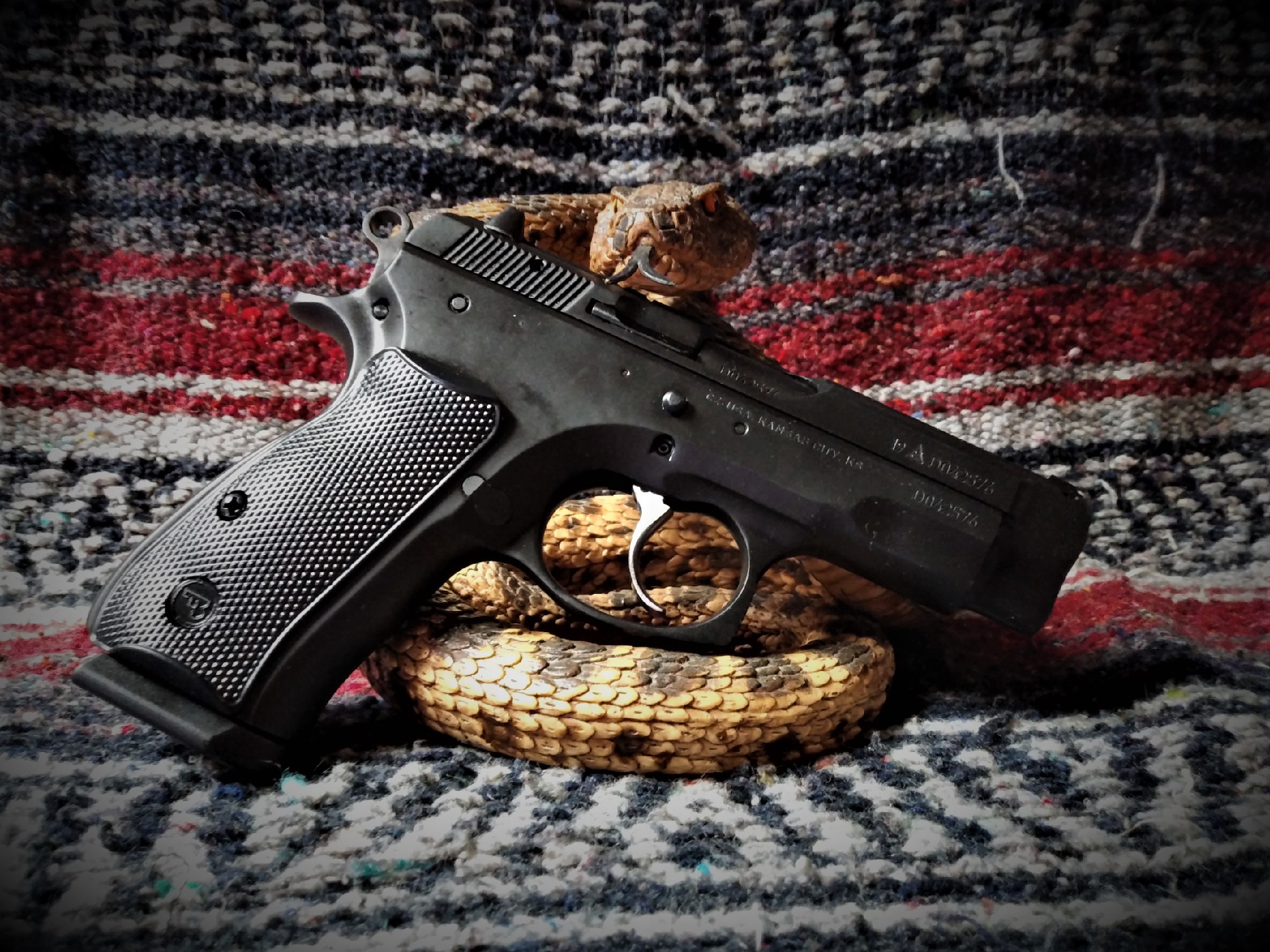
CZ 75 Compact with Provided Plastic Grip Panels
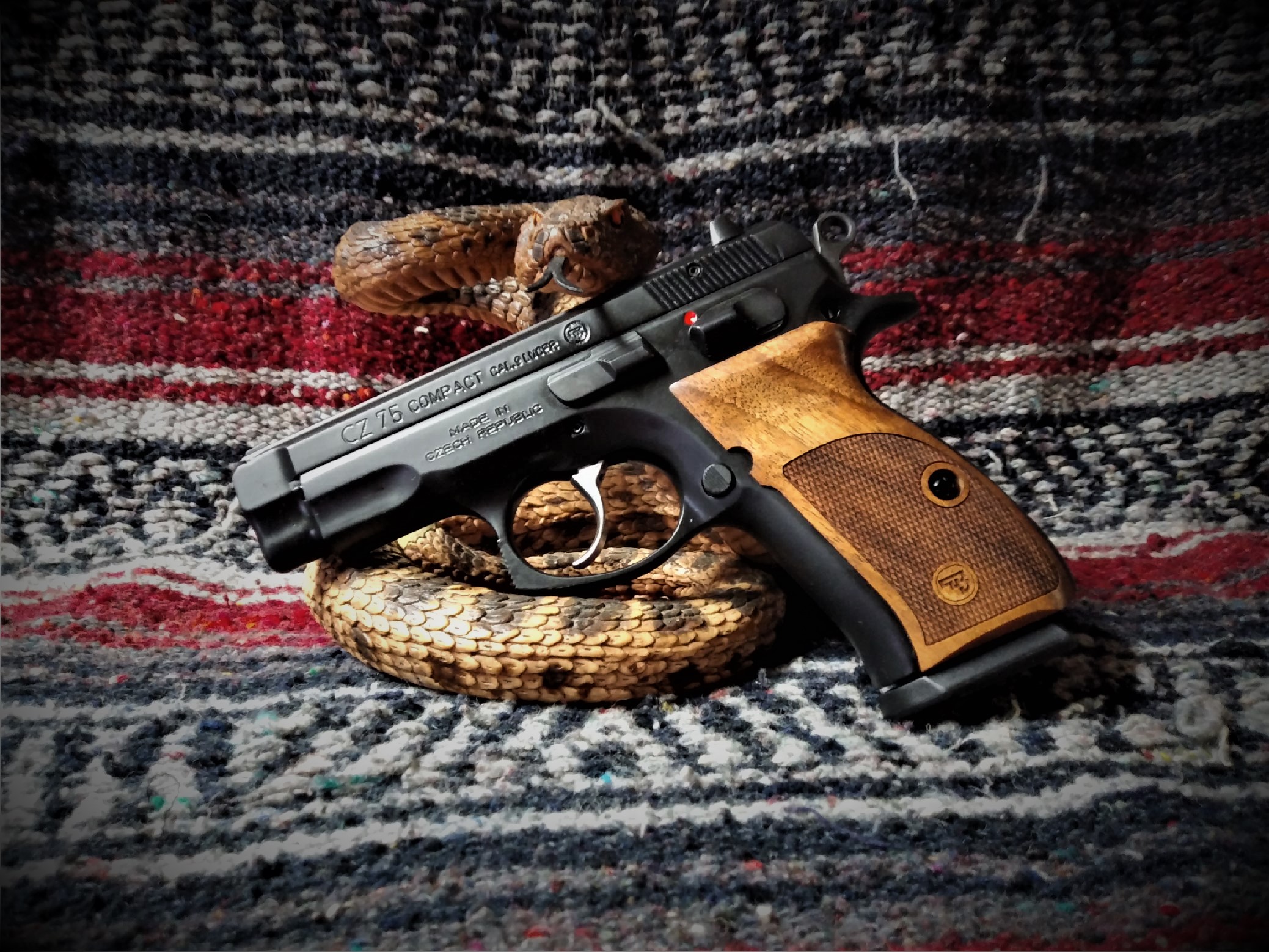
CZ 75 Compact with Wood Grips
The controls, safety, and slide lock are large and in charge. The safety lever has two positions, safe (up) and fire (down with red dot visible). As large as the controls are, they are well blended into the overall look of the pistols.
The CZ 75, in any form, is a pleasing pistol to look at. CZ has coated the pistol in what they call black poly coat. That does not mean that the pistol is shiny – it is not, which is fine with me, because shiny pistols are harder to conceal. I wear a black T-shirt as part of my casual dress, and a black pistol and holster makes a good concealment option.
Note that this model, the CZ 75 Compact, is not the same as the CZ 75 D PČR Compact, which is similar to the P-01 in size, with an aluminum alloy frame but lacks an M3 rail frame of the P-01, features a smaller muzzle point and snag free sights, and is a popular choice for a carry weapon that is known for its inherent accuracy and weight distribution.
Something to Rail About
It is what you cannot see is what matters. The full-length railed CZ 75 frame, in all formats, incorporates an internal rail rather than an external rail as found on a lot of pistols. The slide rides low in the frame and provides a low bore axis, which also aids in reducing felt recoil. Some complain that there is not enough slide height to grasp, as compared to what they are used to. Well, that is a personal thing. A little adaptation on part of the user and everything will fall into place.
That Jerk of a Trigger
If you have a propensity to jerk a trigger, then the CZ 75 trigger is meant for you – to break that bad habit.
The double-action pull is around 11 pounds 0.7 ounce (averaged) and long (from full rest position). But the destination is worth the journey, because after the hammer falls the pistol is in single-action mode where 5 pounds 4.3 ounces (averaged) of rearward pull drops the hammer again. With the safety in the safe position, the trigger is taken out of commission. This means that you can carry the pistol in “Condition 1” just like a 1911; whereas, the hammer is cocked and locked over a chambered cartridge. Press the safety lever down, just like with a 1911 pistol, and the pistol is ready to fire.
Most would, like me, carry in double action mode (Condition 2) from the 1/4-cock rest. Not that I do not like carrying in Condition 1, but because the pistol is double-action capable, I just prefer double-action, in this case.
Comparability
To someone unknowing, trying to figure out where the CZ 75 Compact fits into the grand scheme of handgun sizing, can be perplexing. If you are familiar with the Glock G19, then just think ‘Glock G19’ and you will have your answer.
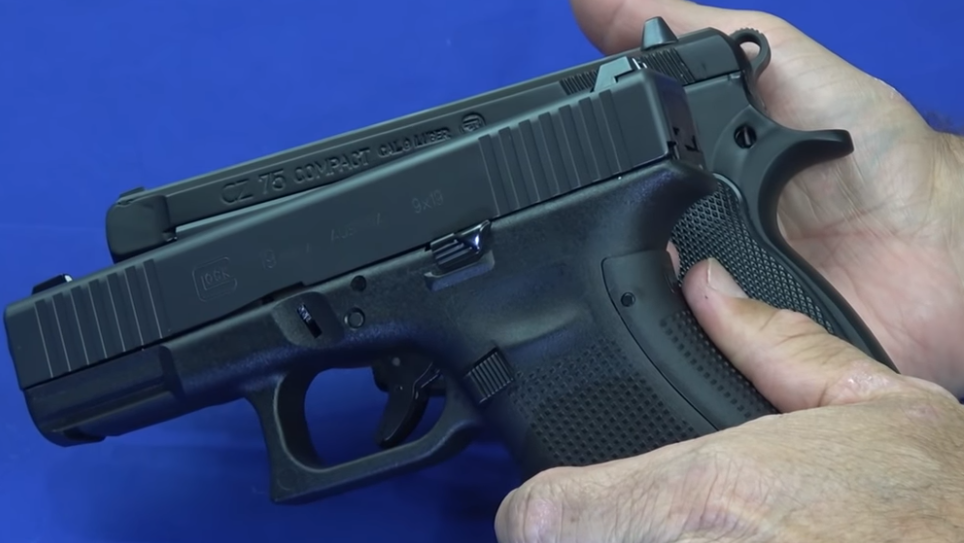
The Glock G19 and CZ 75 Compact Size Comparison
Range Prepping
Any pistol, especially when new and out of the box, should undergo a thorough inspection, cleaning, and lubricating prior to shooting for the first time. The CZ 75 Compact is no different from other pistols in that respect.
Like the standard CZ 75, the CZ 75 Compact is disassembled in the same manner, which is a bit different from what you may be used to.
- Remove the magazine from the pistol and ensure that the pistol is unloaded. Then, visually inspect to unsure that the pistol is safe.
- Place the hammer in the quarter-cock position.
- Push the slide to the rear until the two rear alignment marks on the slide and frame align.
- KEEPING THE LINES ALIGNED, push (tap) the slide stop from the right-hand side of the frame (i.e. using the magazine base or other non-marring tool).
- Remove the slide stop from the left side of the frame.
- Pull the slide and the barrel forward off the frame.
- Remove the recoil spring and guide and finally the barrel. No further disassembly is needed for routine maintenance.
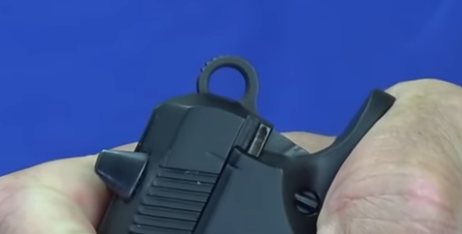
Align the Slide and Frame Marks

Push the Slide Lock out from the Frame and Then Remove from Left Side of Frame
I am assuming that you have cleaned pistols before, so I am not going to go through cleaning and lubricating methods with you, as you no doubt have a method of your own. If you are unsure as to how to thoroughly clean a CZ 75 series pistol, then watching this video or this video may help you.
Some care must be taken when installing the grips, should you remove them for whatever reason. The grip panel mounting screws are fastened directly into the frame; therefore, over-tightening is not advised.
To assemble the pistol:
- Insert the barrel into the frame.
- Insert the guide rod and recoil spring into the frame and secure it against the barrel.
- Slide the entire assembly onto the frame.
- At a point about midway into the frame, partially insert the pin of the Slide Stop. The pin should be engaged with the barrel’s link-less cam at this point.
- Continue to slide the slide onto the frame until the alignment marks on the slide and frame align.
- Align the Slide Stop with the assembly notch in the frame and press inward. An audible click will be heard when the Slide Stop assembly is fully engaged with the frame.
- Perform a function check.
Range Time for the First Time
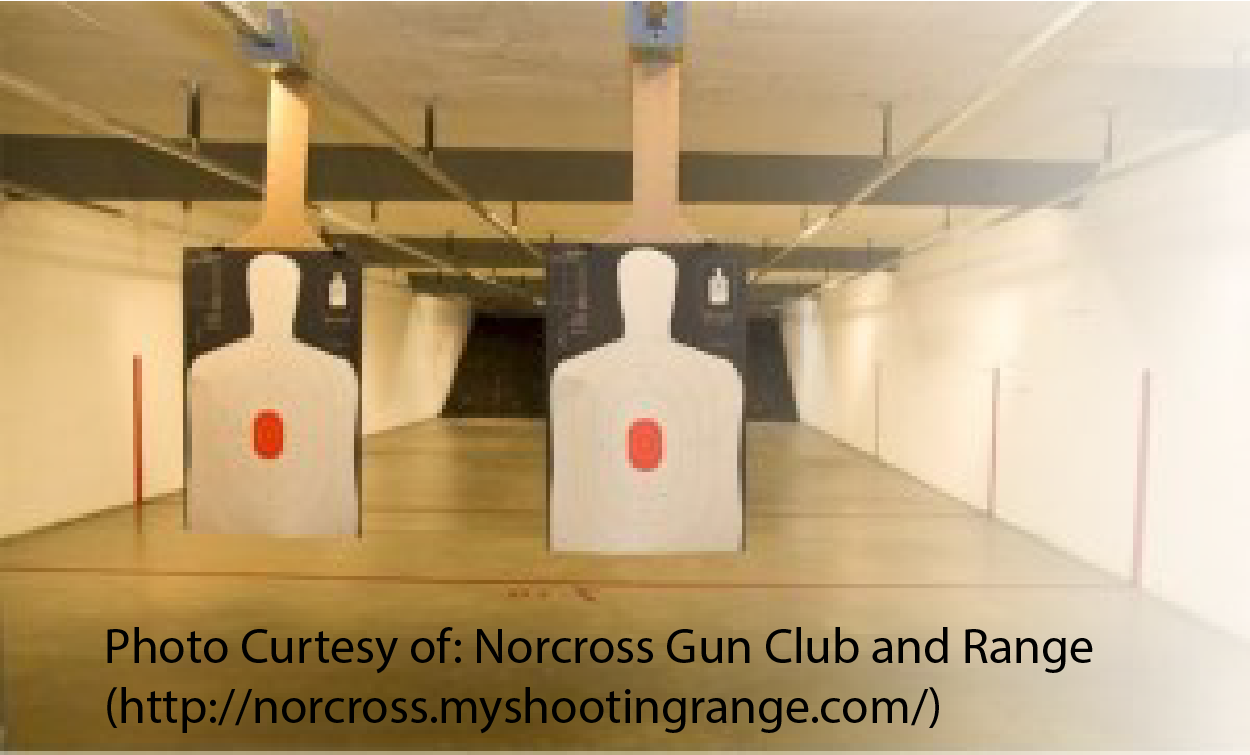
While quite a few reviewers of firearms expend any number of rounds through a firearm before reviewing them, I prefer to review a firearm almost right out of the box. I like to unbox them, field strip them, lubricate them according to the manufacturer’s recommendations (or based on my own experience), take them to the range, and shoot them. I like my readers to experience (as best as I can convey) what I experience from newly owning the firearm. Of course, I cannot expect you to experience the ataraxy that I feel when a firearm is running perfectly, nor do I expect you to feel the frustration when things are not going quite as expected. But, hopefully, I can convey the facts of the shooting experience.
Once thoroughly cleaned and properly lubricated, the CZ 75 Compact was ready for some range time.
Mag-Tec 124-grain FMJ served as the base evaluation fodder with some Sig Sauer V-crown 124-grain and 147-grain passing through for defense load testing.
The silhouette target was set at 7-yards for function and accuracy testing. Once I figured out what my POA and POI was telling me, I would move on to my favorite drill, the “Mozambique Drill,’ to test double action to single action transitions.
The CZ 75 Compact does not have the trigger of the CZ 75B Omega, which is a much nicer trigger. The trigger pull of the CZ Compact is 11 pounds and 13.1 ounces pounds in double-action mode and 5 pounds and 4.3 ounces in single-action mode.
Of course, the double-action trigger travel is long. It begins with a little free-floating take-up. As the trigger is pulled an audible and tactical click presents itself. This is the safety notch (1/4-cock position). The trigger can rest at this point; wherein, the pistol is in double-action mode. At this point, there is a little bit more free play in the trigger. Continuing to pull the trigger rearward, which seems like a long distance, the hammer drops. Up to that point, the pull is smooth. The trigger does not stage at any point in the trigger pull. However, with practice, you can determine a point at which the trigger is about to break. This point is more of a sense of where the trigger finger during the trigger stroke; it is a developed feeling through practice. With practice, you can sense the position of the trigger before the break. This is a useful feature for target shooters who are not under a time constraint. In defensive mode, and with normal trigger operation, the “staging point’ is easily passed, but is still present if looked for.
When in double-action mode, the object is to start the trigger pull as the pistol is being pushed forward from the high ready position. By the time this transition has ended the hammer should be ready to drop. This takes some timing on the part of the shooter, and it is something that I have not yet mastered with this pistol, nor that of the CZ 75 BD, nor of the Beretta 92/M9. Some consider the long double-action pull of the double-action/single-action pistols the bane of their existence. However, I just find it as something to be overcome through training and practice; lots and lots of practice.
In single-action mode, there is quite a bit of take-up until a slight resistance is felt. After this, there is a slight bit of weighted travel to work through until the hammer drops. The trigger break is crisp in both double-action and single-action modes.
Now, some have claimed that the trigger pull on the CZ 75 D (PCR) is not as good as that on the CZ 75 Compact, which has a safety instead of a de-cocker. I wanted to put that to the test.
The double action trigger pull on the CZ Compact (safety lever version) is 11 pounds 13.1 ounces, as stated previously. The single action pull is 5 pounds 4.3 ounces, also as stated above. The double-action trigger pull on the CZ D (PCR) is 11 pounds and 10.0 ounces (5-pull average) with a single-action trigger pull of 5 pounds 2.5 ounces. However, and since I carry both CZ compacts at the ¼ cock safety notch, I needed to measure the double-action trigger pull from that point. The CZ Compact average is 10 pounds 4.5 ounces; whereas, the double-action trigger pull on the CZ D (PCR) is 9 pounds and 8.2 ounce (5 pull average). So, let’s crunch the numbers.
| CZ 75 Compact | CZ 75 D (PCR) | |
| Double-action (at rest) | 189 ounces | 186 ounces |
| Double-action (1/4 cock) | 164.5 ounces | 152.2 ounces |
| Single-action (full cock) | 84.3 ounces | 82.5 ounces |
From my standpoint, the opposite is true; the CZ D (PCR de-cocker)) has a lighter trigger pull than the CZ Compact (safety). What also can be derived from the numbers is that the double-action trigger pull from the ¼-cock rest is not only lighter but shorter. I prefer to carry both pistols at the ¼-cock rest for safety reasons, although I could carry the CZ Compact in “Condition 1” as the safety allows. Having a lighter double-action trigger pull at the ¼-cock position does not hurt at all.
The magazine release button takes a shift in my grip to press, but the magazine drops cleanly.

CZ sights are Photo-Luminescent
The front and rear sights, while small, are easily visible even with my old eyes. Some of that is attributed to the fact that the sights are fluorescent and glow. Under bright sunlight, they are excellent. Under low light conditions, a quick blast with a light source brightens them up. The sights on the CZ pistols are a complaint by many, but they seem to work for my old eyes. A good sight of night sights would be an improvement, I suppose, but the standard sights work for me.
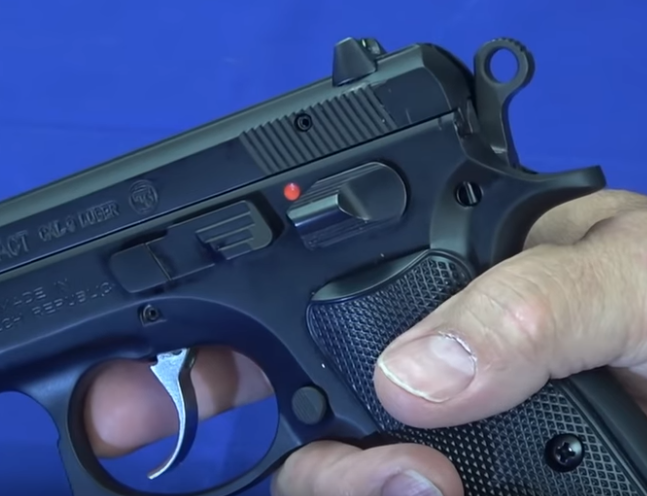
Safety Lever is Easily Accessible.
The safety lever is well defined and quick to work; a simple pressing down of the lever with the thumb, as with the 1911 pistol, to take it off safe and a press upward to place the pistol in the safe mode. There is no de-cocking; the safety acts just like that on a 1911 pistol and those accustomed to a 1911 will have no issues with the safety lever.
Magazines fall free and without interference or hang-up. Likewise, the mag-well is easy to find and magazines are inserted easily and lock up tight.
De-cocking the Hammer
Since the CZ 75 Compact does not have a de-cocking mechanism (at least on this model), de-cocking the hammer is a manual affair.

De-Cocking the Hammer is a Manual Process
To de-cock the pistol:
- Grasp the grip.
- POINT IN A SAFE DIRECTION.
- With thumb and forefinger pressed on the grooved area (thumb piece) of the hammer, pull and then release the trigger and then release the hammer slowly until it rests on the action (or the quarter-cock safety rest (I explain this ‘quarter-cock’ notch later). The pistol is now in double-action mode.
To carry in “Condition 1” (Cocked and Locked):
- With a loaded magazine inserted, pull the slide rearward and release to chamber a cartridge. The hammer is now in the cocked position and ready to fire.
- Press the safety lever upward until the red dot is hidden from view. The pistol is now in “Condition 1” and is safe to carry.
The pistol is safe to carry in double action (Condition 2) or single-action (Condition 1) modes.
It must be noted that when the hammer is down, the safety lever cannot be engaged. Only when the hammer is cocked can the safety be engaged.
Although not noted in the nomenclature of the pistol, such as CZ 75B, the CZ 75 Compact does have an internal firing pin block that prevents the pistol from discharging unless the trigger is pulled. Note also, that there is a “quarter cock’ rest.
The CZ 75 Compact did quite well. With no failures of any kind, apart from the shooter, the CZ 75 Compact performed flawlessly, which is something that I have come to expect (and respect) from these pistols.
For a compact pistol, the ergonomics of the grip and weight of the pistol makes it very pleasing to hold and felt recoil is very mild. The grip is slightly shorter than the full-size CZ 75 and is comparable to a Glock G19 , which means that my little finger is right at the bottom of the grip and is resting on the magazine base plate, which is of polymer. The grip is extremely comfortable in the hand. Magazines for the CZ 75 Compact are not cheap and run in the $45 range; however, shopping for the best price can pay off.
Accuracy is more than this shooter can wring out of it. With “Mozambique” drills, the double-action first shot is a challenge keeping the sights aligned and on target throughout the trigger pull. The transition to single action also takes some getting used to. I was practicing from double-action (Condition 2 from 1/4-cock rest) and single-action (condition 1) first shot shooting. While I prefer Condition 1, I am also comfortable with Condition 2, and that would be the way that I carry this pistol, as I do the Beretta and other CZ pistols.
I have to note here that I am not the world’s fastest shooter, nor probably the fastest shooter at the range. I have an internal timed-sequence that is embedded in my brain when running drills, and usually goes; “one-second, two-second, three, second” with the first two center mass (or wherever I want them to go) and the third betwixt the eyes (or as close as I can put it). I have found that I can shoot the same tempo when shooting double-action as I can single-action. My rate allows me to shoot and then evaluate between shots.
Concealment
This is the point in my reviews where I tell you that the firearm under review can be concealed. So, I will; “The CZ 75 Compact can be concealed.”
Any holster that the full-size CZ 75 can fit into will also house the CZ 75 Compact. I can say; however, that my CZ 75 Compact will never feel Kydex on its surface.
As with any concealed carry, doing so requires planning, the right gear, the right dress, and the right attitude.
One leather holster option from Simply Rugged Holsters is the “Cumberland” holster (shown below with the Beretta M9). I have this holster for several of my pistols to include any 1911, the Glock G41 and G34, the Beretta 92/M9, and one has been ordered for the CZ 75 (which includes the CZ 75 B Omega, the CZ 75 BD, and the CZ 75 Compact, at this time).

Simply Rugged “Cumberland” Holster (Beretta M9 Shown)
Two holsters, which I like, are designed to fit the CZ75B; the Falco A112 Hawk and the Craft Shoulder Holster System with Mag Pouch (Code: It. OK1). The Galco Miami Vice and Miami Vice II shoulder holster systems; albeit more expensive than the Craft system, are also excellent choices.
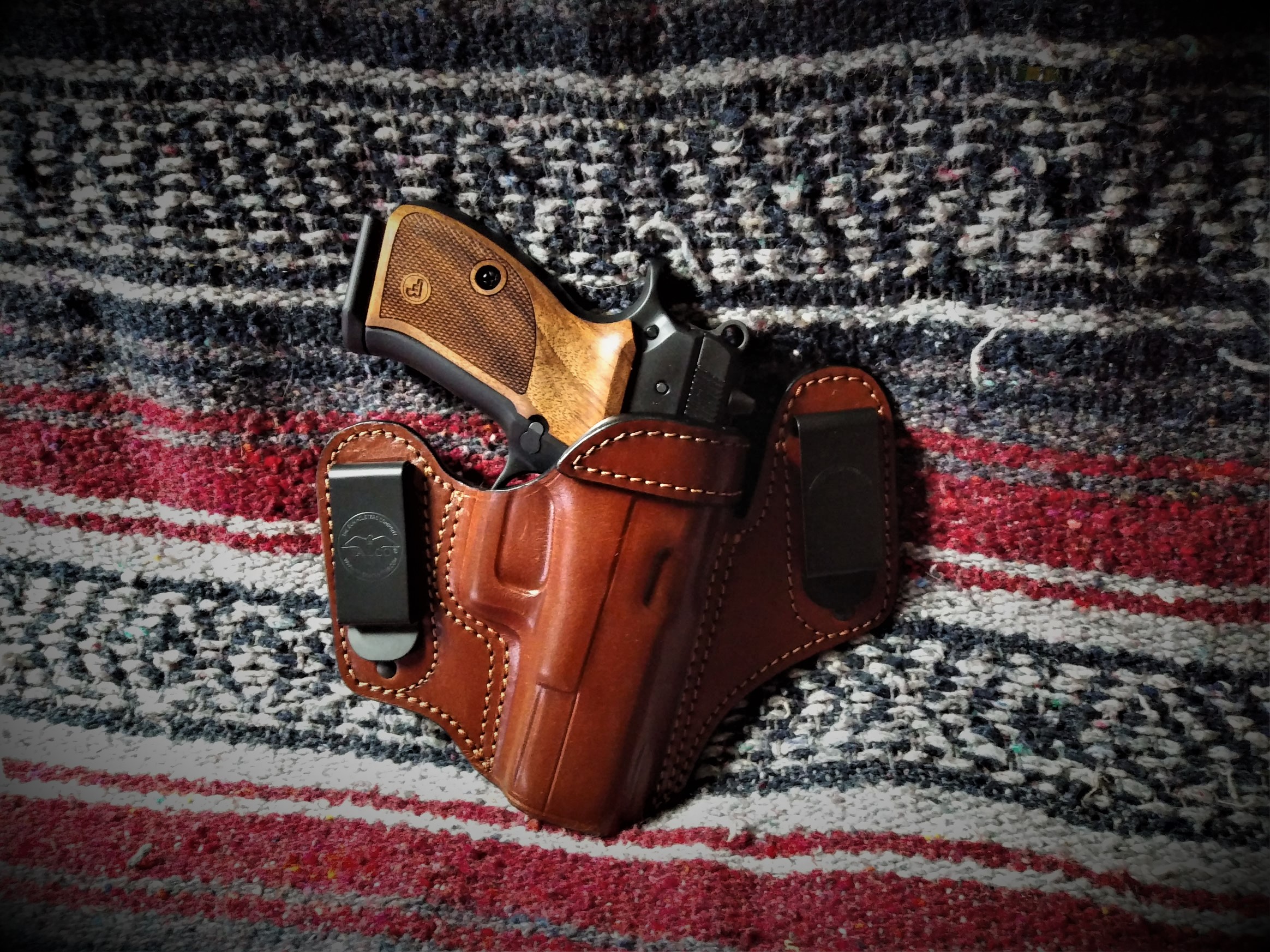
Falco A112 Hawk IWB Holster
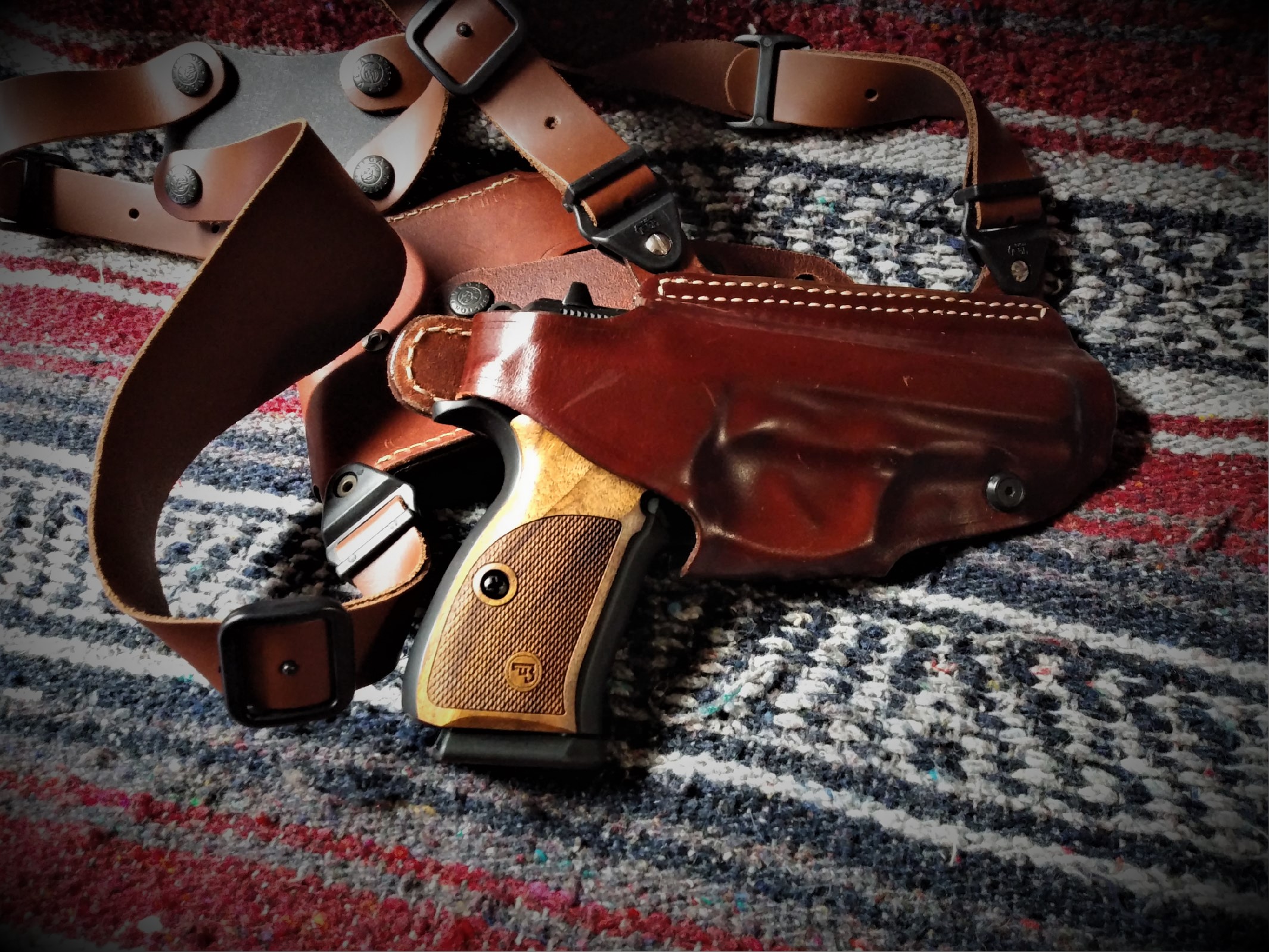
Craft Shoulder Holster System with Mag Pouch Code: It. OK1
Another is the “Cuda” holster from Simply Rugged, shown below. This holster has belt slots for use as an OWB holster or straps can be purchased for IWB carry.
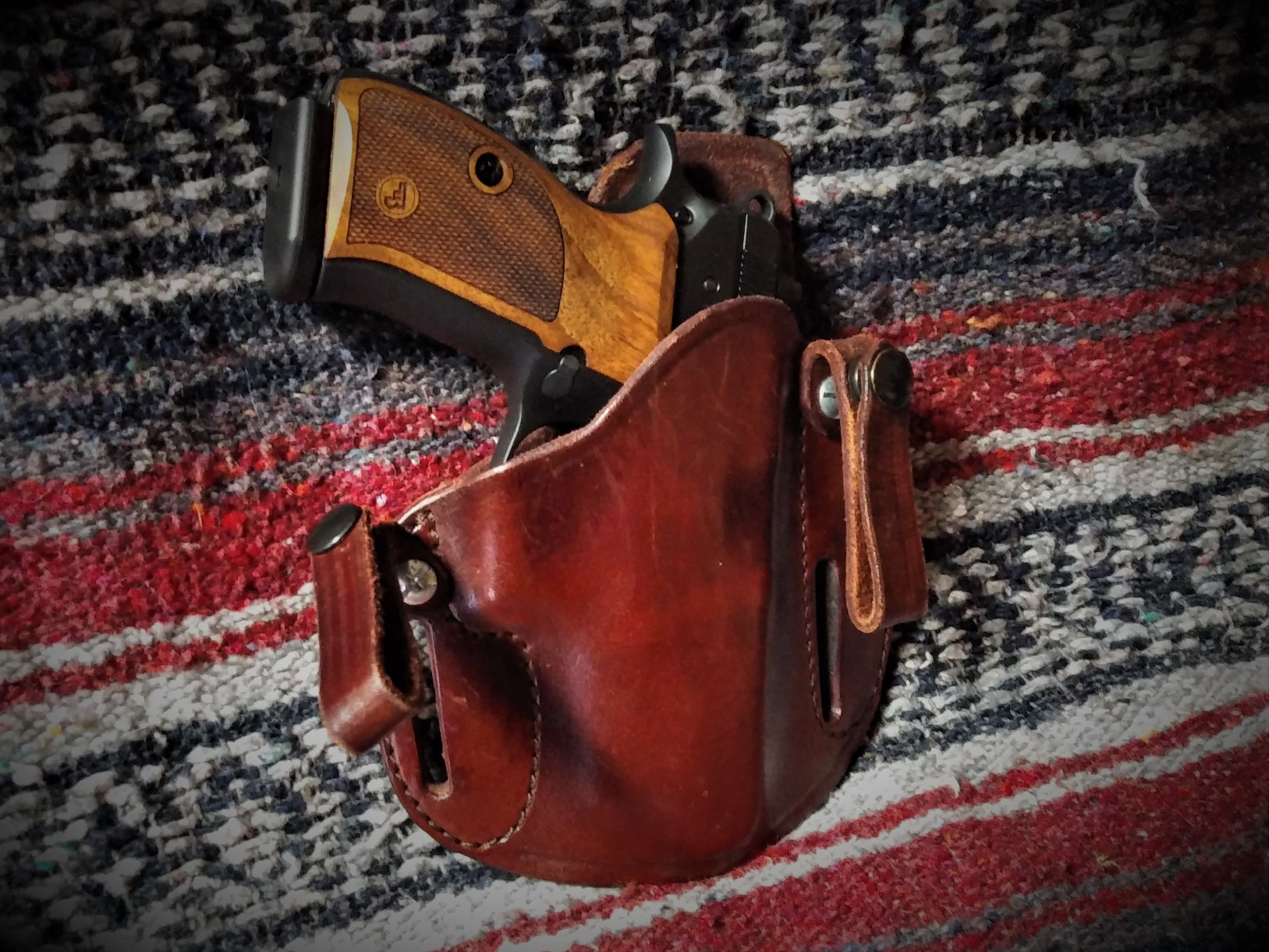
“Cuda” Holster from Simply Rugged Holsters
Some Precautions are in Order

I keep A-Zoom Snap Caps around for every caliber of firearm that I have, including rifles and shotguns. I have become accustomed to having a snap cap in any firearm that I intend to dry fire. The CZ 75 series of pistols is no exception.
It has been stated in several articles that the firing pin block roll pin can become damaged when dry firing a CZ 75 without a snap cap or dummy round in the chamber. The Springfield Armory XD series suffers from the same malady. I also use snap caps in any single-action and double-action revolvers just to protect firing pins.
Upgrades
While I had upgraded the original grip panels with wood panels, I decided to go a bit further and ordered a set of Cool Hand G10 Grips for CZ 75/85 Compact, CZ P-01, P100, C100, T100, PCR, CZ 75 D, Screws Included, Palm Swell Back Style, Mag Release, OPS Texture in orange/black from Amazon. The result is shown in the image that follow.
The new grip panels, while slightly aggressive in texture, do provide an effective gripping surface. The palm swell contour helps the panels to fit better in the hand than flat grip panels and the orange and black theme help to add a bit of contrast to the pistol. Whether they remain on the pistol; however, is left for later.
The grip panels came with custom TORX head screws and rubber washers that help keep the screws from backing out, which I found is common with G10 grips.
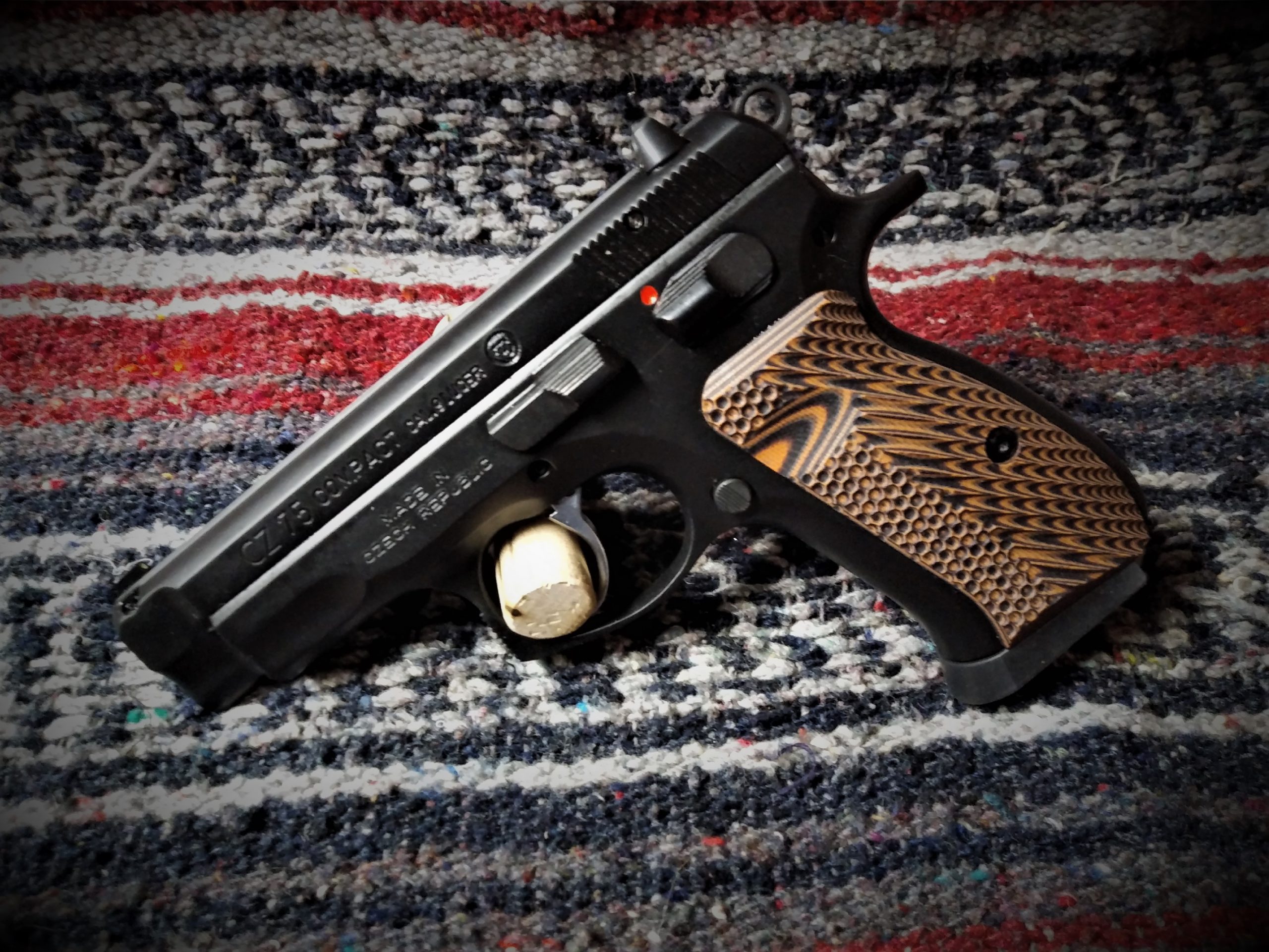
Cool Hand G10 Grips
The grip panels include custom TORX head screws and rubber washers that help keep the screws from backing out, which I found is common with G10 grips. A TORX wrench is also provide with the mounting screws.
The left side thumb relief allows me to reach the magazine release button without changing my grip.
I would advise wearing an undergarment with these grips, as you may develop “grip rash” should you not heed this advice.
The wood grip panels would not be wasted, as they found their way onto the CZ 75 PCR Compact, which replaced the rubber grip panels that came with the pistol.
With the above said, and after range time with the CZ 75 Compact, the Cool Hand grips were judged to be a bit more aggressive than I wished. A set of wood grips was ordered from Grips4You.com.
My Final Thoughts
It is common that when you carry a full-size pistol that you want a smaller version either for a backup firearm or as a primary carry under certain conditions. The CZ 75 Compact certainly fits into that scheme of thinking. At first, I was unsure about the CZ 75 Compact. I did not need one, but my curiosity got the best of me. I am glad that I succumbed. For someone who likes this kind of platform, the CZ 75 Compact will serve you well.
I compare these older firearms to antique Harley Davidson motorcycles or antique cars. You can have the newest and ‘bestest’ road hogging HD, and it will draw a crowd. When someone rolls up on a ’36 Knuckle in mint condition, guess where the crowd goes.
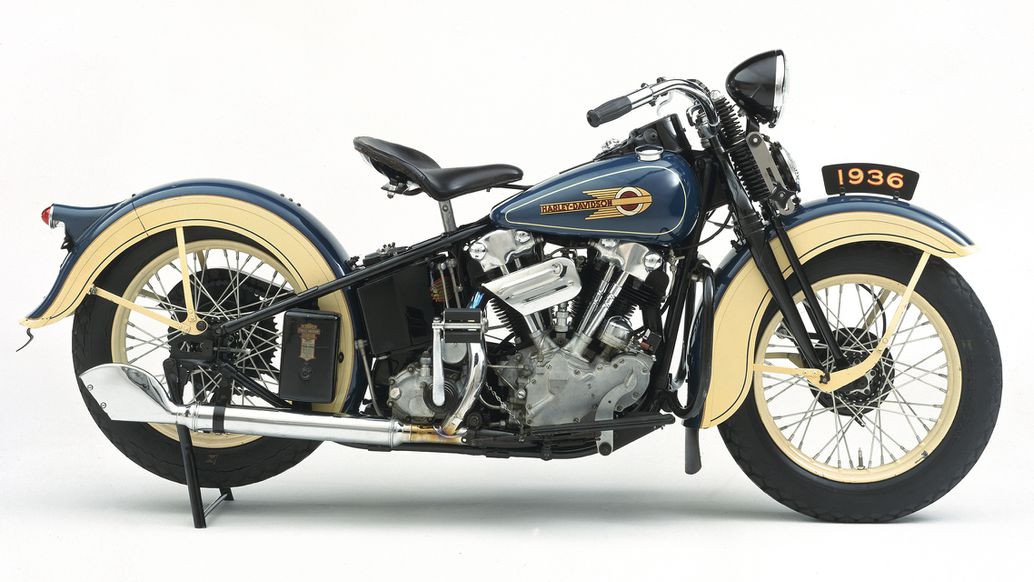
1936 Harley-Davidson Knucklehead
So, that ‘Lambo’ is your show-off car, huh? When that customized chopped and channeled ’34 ford shows up, guess where the crowd is going to move. There is still a bunch of folks that like ‘old school’ in its finest form.
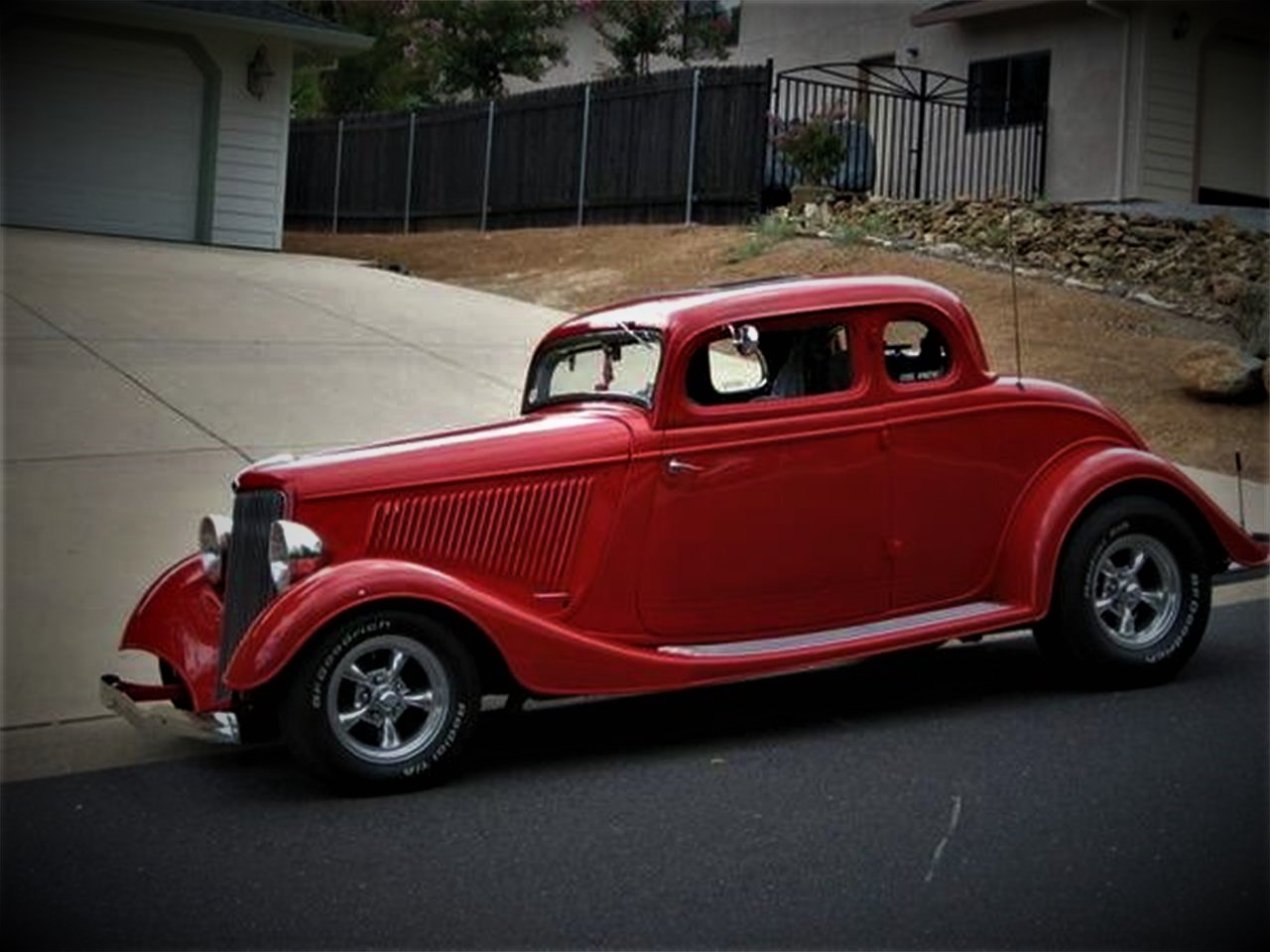
1934 Ford 5-Window Coupe
So, the question if I would carry the CZ 75 Compact is still out there. The answer is a resounding yes. In fact, it is one of the few pistols that I enjoy carrying. The weight tells me that I am carrying something substantial and that gives me some confidence in the firearm that I am carrying should I need to need it when the elephant arrives.
If you are in with the polymer ‘wonder nine’ crowd, you owe it to yourself to become familiar with the ‘old world’ products that are just as relevant today as they were in their heyday, and who’s to say that their day is over? It will also make you a more well-rounded shooter. And, incidentally, the Glock design is over 30 and one-half years old. Although it has been in service since 1982, the design began around 1979.
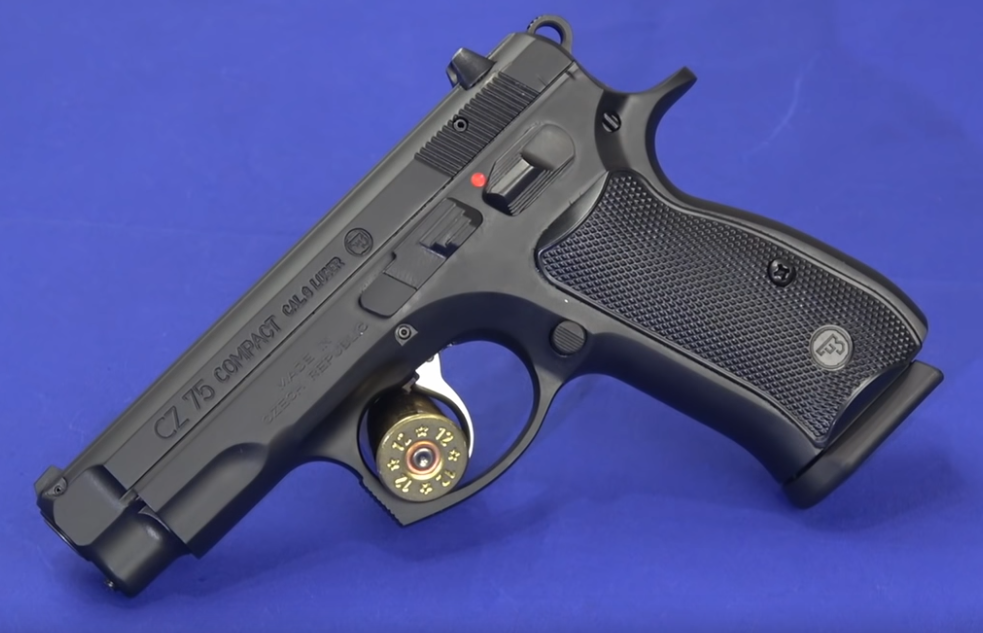
Once again, I am happy to say testing and evaluating this pistol has been a joy. With the market currently geared towards slim and polymer concealed carry pistols it is easy to overlook something like a CZ 75 variant. During the evaluation period I began to think about my current carry system and the possibility of going to the CZ permanently, while hoping that I do not need therapy for thinking such. While I will not be hanging up the 1911 any time soon, I think the CZ 75 Compact has earned a longer stay, as has the Beretta M9. I am certain this gun will be revisited for a follow up review. Opinions sometimes change regarding carry pistols. I know mine have, out of necessity. But I can say with confidence, that the CZ 75 Compact is one hell of a compact pistol, a true working pistol, and that is all I have to say.
Resources
Here is where I get to share what I have found on the pistol under review. There is plenty of reading and viewing material for you, which may help you decide if the CZ 75 Compact is a good fit for you.
- CZ 75 Compact: https://cz-usa.com/product/cz-75-compact-9mm-black-14-rd-mags/
- A Smaller CZ: The CZ 75 Compact: https://www.youtube.com/watch?v=YrScz_hKwwQ
- CZ 75 Compact Review – The Biggest Little Carry Gun: https://www.youtube.com/watch?v=Y07vRYZDas0
- CZ 75 Full Size and Compact 9mm Pistol Comparison: https://www.youtube.com/watch?v=XskvmjdJbKk
- CZ 75 Trigger Spring Kit – Custom CZ 75 Trigger Job w/ M*CARBO CZ 75 Accessories: https://www.youtube.com/watch?v=cX3AnGVnwWk
- CZ 75 Compact, all steel overview: https://www.youtube.com/watch?v=8ILUtOp5vKA
- CZ 75 compact review for CCF: https://www.youtube.com/watch?v=b_QI72lJ9sM
- How a CZ 75 works: https://www.youtube.com/watch?v=h7ri33LDHZk
- CZ 75 CZ Recommended Cleaning: https://www.youtube.com/watch?v=LasSRPjiIok
- How To Clean And Lubricate A CZ-75 Series Handgun (HD): https://www.youtube.com/watch?v=5aPYSnIAP8o
- Shooting CZ-75 Compact 9mm: https://www.youtube.com/watch?v=EiakJ9zcRU0
- CZ 75 Compact 9mm Review and Opinions: https://www.youtube.com/watch?v=qpdFmKCH8-s
- CZ 75 C 9mm Pistol Review (female perspective) : https://www.youtube.com/watch?v=mA0iBzKl4Ow
- Wilson Combat Training Tip: Double-Action Single-Action Transition: https://www.youtube.com/watch?v=ivs-URdfWu4
- Fear Not the Double Action Shot. Part I: https://www.youtube.com/watch?v=FsoX26OhDCY
- Fear Not the Double Action Shot Part 2: https://www.youtube.com/watch?v=GZplH6zreQI
- Fear Not the Double Action Shot Part 3: https://www.youtube.com/watch?v=nod5qLlSGUM
- Learning the Double Action Single Action Trigger: https://www.youtube.com/watch?v=bU4v5i5c42k
- CZ 75 Compact: https://www.youtube.com/watch?v=yU7yt1mY-58
![]()

